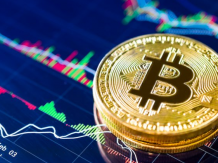Despite the June turnout, hot money still yielded a $306.25-million net inflow last semester.
Data released showed Junes gross inflows at a two-year low.
Foreigners put in $910.78 million worth of funds in June, the smallest amount of investments since January 2016.
The peso has been trading at 12-year lows against the dollar as it pierced the P53 level since mid-June. For the month, the currency averaged P53.0476 versus the greenback to remain one of Asias worst performers.
A Feb. 19, 2018 file photo shows a trader at work at the Philippine Stock Exchange. Nearly 92% of foreign portfolio investments went to shares of publicly listed companies.
Inflation went beyond the central banks estimates to clock in at a five-year-high 5.2% last month, which brought the first semester pace to 4.3% against an official 2-4% full-year target for 2018.
Nearly 92% of the investments went to shares of publicly listed companies, particularly holding companies, property firms, banks, food, beverage and tobacco companies, as well as utility providers. Transactions in such securities, however, yielded net outflows of $346 million.
Registered foreign portfolio investments posted a $516.12-million net outflow last month, more than double the $206.35-million net outbound funds recorded in May and reversing the marginal $72.56-million net inflow in June 2017.
The BSP said the continuing trade war between the US and China pushed investors to withdraw their funds, adding to a net foreign selling trend at the Philippine Stock Exchange since February.
The Fed introduced last month its second rate hike for the year in the face of US economic recovery evidenced by inflation and job creation targets met.
Investors from the United States, United Kingdom, Singapore, Hong Kong and Switzerland emerged as the biggest hot money sources last month.
About 82.7% of outbound funds went back to the US as the primary safe haven for market players.
This may be attributed to the United States (US) Federal Reserves decision to increase interest rates and investor concerns on inflation and the further weakening of the Philippine peso, the BSP said in a statement.
The central bank expects hot money to register $900-million net outflows by years end, which would be wider than the $205.03 billion in outbound funds last year, amid nagging uncertainties in global financial markets.
These investments are referred to as hot money due to the ease by which such funds enter and leave the country with ease in the face of market-moving news.
This reverses the $467.83-million net outflows in 2017s first half, data showed.
MORE FOREIGN FUNDS fled the Philippines in June marking the second straight month of net outflows as concerns about rising inflation and a weaker peso dampened investor appetite, the Bangko Sentral ng Pilipinas (BSP) said yesterday.
Last month also saw a second rate hike from the BSP, amounting to another 25 basis points, to rein in inflation pressures.
Foreigners also placed their money in government-issued debt papers, which also ended up with $170-million net outflows.
These bets were cancelled out by $1.427-billion funds plucked out of the Philippines, with hot money seeing net outflows for all of Junes five weeks.
